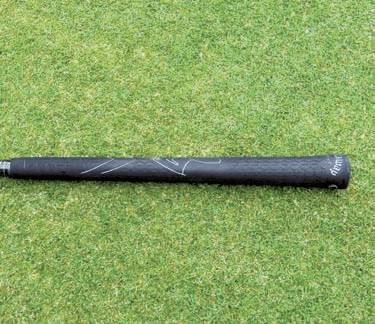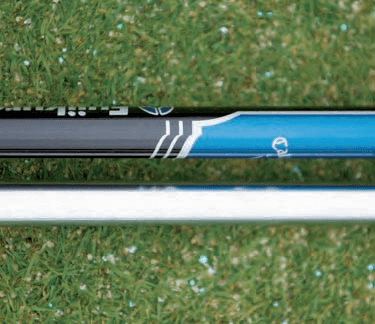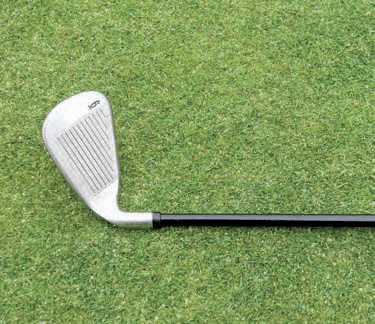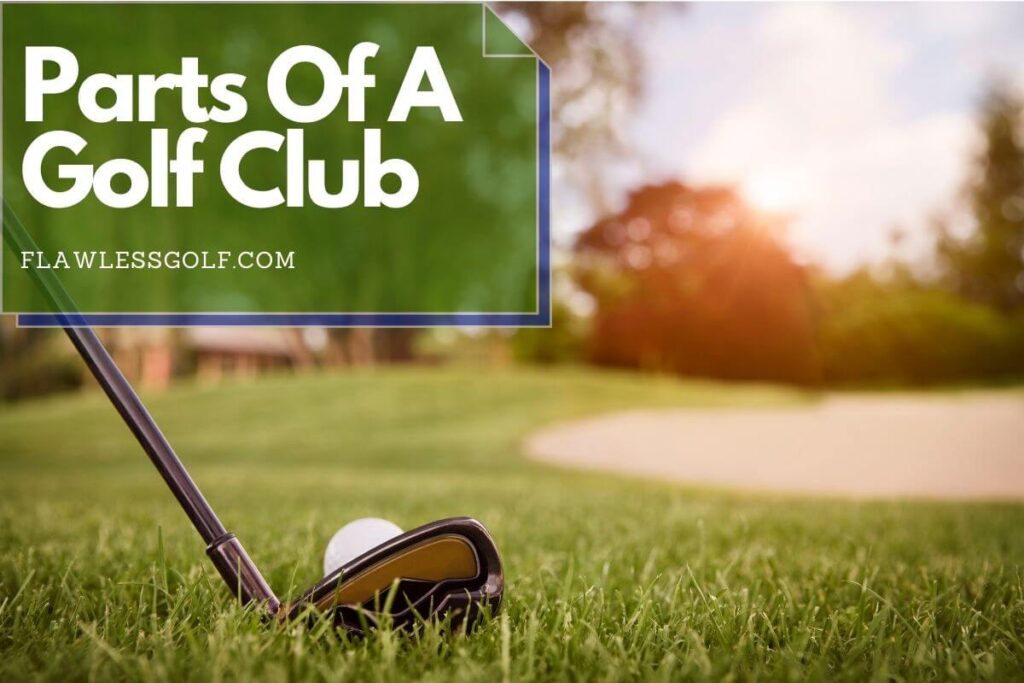A golf club is made up of several individual components that are brought together as one during the club-making process. The three main parts are the shaft (which can be made of either steel or a lighter material called graphite), the clubhead (the shape and size of which depends on the type of club being made), and the grip (which is attached to the shaft so you can hold the club properly).
Table of Contents
Parts Of A Golf Club
1. GRIP

The grip is your physical connection to each club. Different materials are used in grips, but all are designed to enable you to maintain your hold on the club during your swing. Grips do wear out over time, so it’s important to have them replaced as needed.
2. SHAFT

Shafts are made primarily out of steel or graphite. Either material can be used in the shaft of any club, but steel is usually used for irons and wedges, while graphite, which is lighter, is found mostly in drivers and woods to promote higher swing speeds.
3. HOSEL AND CLUBFACE

The clubface is the part of the club that strikes the ball. While your goal is always to hit the ball with the center, or “sweet spot,” of the clubface, you may hit the ball off the heel, which is the end closest to the shaft, or the toe, which is the end farthest from the shaft.
The hosel is where the shaft connects to the clubhead. A ball struck with this portion of the club is likely to go off in a sideways direction.
Where And How To Buy Golf Clubs?
The official limit on the number of clubs you can carry in your bag during a competitive round is 14, but beginners should try out as many varieties of clubs as possible before purchasing a set. You want to find clubs that feel comfortable and work with your natural tendencies.
Buying Your First Set Of Clubs
Golf clubs are sold at sporting goods stores, specialized golf equipment stores, and pro shops at golf courses. Irons and woods are usually sold separately in sets, while hybrids, putters, and wedges can be bought individually.
A basic beginner set usually includes a driver, two woods (usually a 3-wood and a 5-wood), irons 3 through 9, a pitching wedge, and a putter. As your playing experience grows, you will have a large variety of club and shaft types to choose from to suit your individual game.
With all the choices available to you, buying a set of golf clubs can be an intimidating experience, especially since rows and rows of clubs and starter sets line the aisles of most golf equipment stores. As with any other purchase, you need to do some research.
Read the equipment testing guides published annually by the major golf magazines. Hit balls using a variety of clubs at a golf equipment store, or try out the demo clubs that may be available at driving ranges. Visit the websites of equipment manufacturers for information about their products. Many golf clubs are now being sold on eBay, which can give you some perspective on price ranges.
The more details you have, the better decisions you can make. The best option, however, is to contact a PGA or LPGA professional both for advice and to arrange a club-fitting session. Your height and build affect the type and length of club that best suits you.
During a fitting session, a professional measures your body in relation to a golf club and analyzes your swing (usually on video) to gauge your swing speed and typical ball flight.
This information enables the professional to recommend the appropriate length, shaft type, and lie angle of clubs, including putters, for you.
Club Distance Chart
The following table gives suggested average distances for each club. How far you hit the ball depends on many factors: how hard you swing, how the clubface meets the ball at impact, weather and course conditions, etc.—but these distances give you a general idea of how far each club can hit a ball on average.




